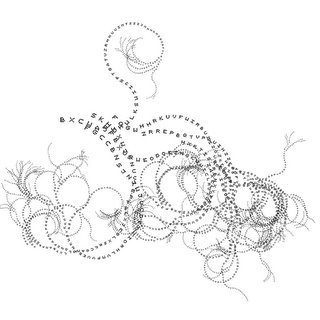The Infinite Set
"To see a world in a grain of sand and heaven in a wild flower. Hold infinity in the palm of your hand, and eternity in an hour." -William Blake
The 5 Universal tenets of 'is'
The basic syntax rules for 'is' Okay! Okay! So yesterday's blog was a little long and convoluted! I had to get it all down in one place so there would be a summary of the syntax, as well as getting it "out of my head" while I had a picture of how I wanted to express it. I'll be refining it, and it'll make more sense if you're reading along through these next blog entries----at least that will be my hope! It's exactly like trying to learn a new language...you gotta start somewhere, and keep cycling back. That's my intent.
Okay! Okay! So yesterday's blog was a little long and convoluted! I had to get it all down in one place so there would be a summary of the syntax, as well as getting it "out of my head" while I had a picture of how I wanted to express it. I'll be refining it, and it'll make more sense if you're reading along through these next blog entries----at least that will be my hope! It's exactly like trying to learn a new language...you gotta start somewhere, and keep cycling back. That's my intent.
Also, in future blogs which deal with the evolution of this theory, for the next while anyway, I'm going to simply place links to the Universal Tenets and to the Basic Syntax at the start of each blog like you see here, so whenever you feel like going back to re-read them, the link will be handy. Those two blogs are the backbone to the entire theory at this point. There will be refinements, but they represent the guts.
All I want to add today is one more concept, and that is the idea of an infinite set. In yesterday's entry, I started out talking about the concept of GOOD, which is a very ambiguous word. Depending on the context, it could be applied to an unlimited number of ideas, things, objects, whatever. So to define the opposite of GOOD as anything but NOTGOOD just doesn't make sense. Otherwise, in one instant it could be 'bad', another instant 'evil', and yet another 'rotten'.
So the opposite of any and every WORD in 'is' will be its own NOTWORD. Each one completely, totally, exactly and accurately defines the other. Of course this potentially opens up a whole whoopass can full of worms. According to tenet 5c), the mere existence of an entity automatically generates not only its exact opposite, but all possible intermediate values as well. That list will be infinite in length, but it won't be a problem, because very few of the values will be of any concern. In fact, only two will be...specifically the values immediately next to the two extremes. Let's be a little less general and look at an example. Draw a line. Any line. Start anywhere, make it whatever shape you like, and end somewhere else. The line is limited by its two ends, and defined by all the infinite dots that you drew and now appear on the line that you pass through to get from one end to its opposite end. If you want to get from one end of the line to the other (i.e. reach agreement) the only significant questions concerning any line are, starting at one end, "which dot do I step on to start 'moving' to its other end?", and, "which will be the last dot I'll be stepping on before I know I've reached the other end?" Those are the only two spots of significance. All those other dots in between are just a lengthy repetition of exactly the same process. The shorter we can make the line, obviously, the more quickly we will achieve agreement. We'll be looking at two ways to shorten the line, but I'll only consider one of those ways in this blog.
Let's be a little less general and look at an example. Draw a line. Any line. Start anywhere, make it whatever shape you like, and end somewhere else. The line is limited by its two ends, and defined by all the infinite dots that you drew and now appear on the line that you pass through to get from one end to its opposite end. If you want to get from one end of the line to the other (i.e. reach agreement) the only significant questions concerning any line are, starting at one end, "which dot do I step on to start 'moving' to its other end?", and, "which will be the last dot I'll be stepping on before I know I've reached the other end?" Those are the only two spots of significance. All those other dots in between are just a lengthy repetition of exactly the same process. The shorter we can make the line, obviously, the more quickly we will achieve agreement. We'll be looking at two ways to shorten the line, but I'll only consider one of those ways in this blog.
Comparing this logic to yesterday's example with RICK and SUE, put RICK and SUE as the two ends of a line called PEACE. Now, PEACE is made up of a lot of things, no doubt, so the line will have some significant length. In yesterday's example, the dot immediately next to RICK is the TOLERANCE dot, and the dot immediately next to SUE is the ACCEPTANCE dot. (Don't fret, I'll be going through more examples in different ways...this is just putting names to dots by way of illustrating!). ALL the other dots on the line, infinite in number, can be sucked up by our universal giant sucking machine into one dot and we'll call it, for lack of a better name, PEACE.
and so you get the 'is'-LINE or 'is'-PHRASE defined as we had yesterday:
'is'-RICK-TOLERANCE-PEACE-ACCEPTANCE-SUE-'is'
The 'is'-WORD PEACE in this example contains (or encapsulates) an infinite number of other 'things'. Instead of listing them all, (which obviously would be impossible), I'll just list a few: calmness, free of conflict, lack of parental control, parental control, jellyfish surviving, .....and so on. Remember it is an INFINITE list. To make it meaningful and useable, I'll be borrowing the same set notation that is used in math and logic, namely placing the list inside the "curly-Q" brackets, and only showing a few of the more meaningful entries (i.e. ones that would likely be 'close' to one end of the line or the other) like this:
{TRANQUILITY, NOT-UNNECESSARY-WAR, LOVE, MERCIFUL, FORGIVING.....}
You can list as many as you think are significant, but usually 3 or 4 is enough. The string of dots at the end of the list indicates that it goes on forever.
An alternative illustration to the RICK-SUE example (in which case both were seeking the same thing on the same line, namely PEACE), you could have a line with opposites at each end. Remember tenet 5c) states that the existence of an entity creates it's opposite, as well as its clone (that would be the case we just did).
But what if Sue took a hike and left me all alone for an exercise. Let's say I wanted to determine my mood at any given moment, on a scale (or a line) of HAPPY to NOTHAPPY.
In that case my infinite list might be something like:
{HAPPY, PLEASED, SATISFIED............OK, AVERAGE................ABITPISSEDOFF.....NOTHAPPY}
In this case, you'll notice a grading of the mood as it moves from one end to the other. You're moods may be different, so you may have graded them differently. Only three things to note here.
First, the END-WORDS must be NOT_WORDS of each other. Other than that, you can show any part of the list you want. Even though the string of dots indicates you know you've left out a whole lot of shades of happy......here's a key point.....so does a comma. It's an infinite list remember. So all those extra dots are redundant, but ok.
Second, every word in the list implies it's NOTWORD is in the same list and in the same reverse sequence (you can read it from both ends, and it means the same thing. So the list I've shown above, in a more complete form MIGHT be:
{HAPPY, PLEASED, NOT-ABITPISSEDOFF, SATISFIED, OK, AVERAGE, ABITPISSEDOFF, ...., NOT-PLEASED,NOT-HAPPY}
But that back-to-front thing tends to get too confusing, so generally, you only need to show the first two or three entries from one end, and their NOTWORDS are implied to be included. starting at the other end, and in reverse order.
Third, if you're into math at all, you'll know that the sequence of the things inside the braces in set notation is not at all important. In 'is', it's very important. It's crucial, in fact.
So, the long and the short of it comes down to:
{HAPPY, PLEASED, SATISFIED....}
Got it?!!! (Click on picture to enlarge the writing)
PEACE PILGRIM












Post a Comment